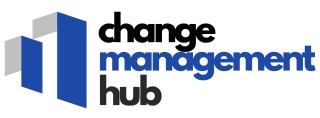
Defining ERP Systems: Traditional vs. Postmodern
Decoding the ERP Systems: Yesterday and Today
The landscape of Enterprise Resource Planning (ERP) has significantly evolved over the years, painting a stark contrast between traditional ERP systems and their postmodern counterparts. Traditionally, ERP systems have served as the backbone of business processes, unifying functions such as resource planning, supply chain, and enterprise resource management under a single, often monolithic, software solution. Traditional ERP solutions were lauded for their comprehensive nature, providing a core system upon which businesses could build integrated applications tailored to specific needs. However, as business environments became more dynamic and complex, the limitations of these legacy systems became apparent. They often struggled with issues related to data integration and system flexibility, hindering the agile response required by modern businesses. Enter the postmodern ERP era. This generation of ERP showcases a best-of-breed approach, leveraging cloud-based technologies to offer real-time data analytics, enhanced flexibility, and scalable resources that align with modern business strategies. These systems are modular, enabling organizations to integrate distinct solutions and applications that better cater to evolving needs. In contrast to the often rigid structure of traditional ERP, postmodern solutions prioritize adaptability and customization. Businesses are now able to choose components that best fit their specific processes, ensuring seamless integration with existing systems and facilitating a more efficient management approach. Change management plays a crucial role in this transition. Organizations must navigate complex integration challenges while adopting postmodern ERP systems to fully realize the benefits these new solutions promise. To fully understand the implications and benefits of this shift, it is essential to consider the broader change management strategies that support seamless transitions. For more insights on navigating such transformative changes, explore navigating the waters of transformative change.The Role of Change Management in ERP Implementation
The Critical Role of Effective Change Management
Implementing an ERP system, whether traditional or postmodern, is a significant undertaking that touches every aspect of a business. The success of this process hinges on effective change management, which ensures a smooth transition and maximizes the benefits of the new system. Change management in ERP implementation is about preparing the organization's environment for a transformative integration of new processes, data, and systems. It plays a vital role in minimizing disruption, fostering acceptance, and enhancing the overall performance and well-being of an organization.- Understanding the Challenges: With any ERP system, there are inherent risks and challenges. These may arise from resistance to change, the complexities of cloud-based solutions, or the need for comprehensive integration with existing business processes. Change management helps to address these challenges by ensuring all stakeholders are engaged and aligned with the project's goals.
- Strategic Approach: The adoption of ERP software requires a strategic approach to change management. Assessing how the changes will impact business processes can identify areas where traditional or legacy systems might conflict with modern ERP capabilities. A postmodern solution requires flexibility and real-time adaptability, which change management can support by tailoring strategies to meet those needs.
- Communication and Training: Effective change management emphasizes continuous communication and training. Providing training for users at various levels ensures they are familiar with the new ERP solutions and can leverage its advantages efficiently.
- Benefits to the Business: Communicating the benefits such as streamlined supply chain operations, best-of-breed solutions, and improved core business processes helps gain buy-in from all levels of the organization. Successful change management ensures that the promise of a modern ERP system is realized, ultimately benefiting the enterprise's resource planning and management solutions.
Challenges in Adopting Postmodern ERP Systems
Navigating the Transition to Revolutionary ERP Platforms
Adopting postmodern ERP systems presents a unique set of challenges for businesses. The shift from traditional ERP solutions to cloud-based, real-time applications necessitates a strategic approach to change management. This transformation isn't merely a technological upgrade; it's a comprehensive change in business processes and operations. Traditional ERP systems, often referred to as legacy ERP solutions, are typically characterized by their monolithic structure. They offer an all-encompassing suite which may include functions like enterprise resource planning and supply chain management. On the other hand, postmodern ERP systems provide a more flexible and modular framework, allowing businesses to integrate "best of breed" applications according to their specific needs. Challenges in Adoption:- Integration Complexity: One significant challenge is integrating modern ERP solutions with existing core ERP systems. This requires meticulous data management, ensuring that all systems communicate effectively.
- Cultural Resistance: Employees accustomed to traditional ERP may resist new processes. Fostering an environment open to change will ease the transition.
- Resource Allocation: Migrating to a new system necessitates dedicated resources, both in terms of personnel and time investment.
- Security Concerns: As businesses move their operations to cloud-based platforms, data security becomes a paramount concern that requires diligent management.
Benefits of Postmodern ERP Systems
Enhanced Flexibility and Scalability
One of the most significant advantages of postmodern ERP systems is their enhanced flexibility and scalability. Unlike traditional ERP systems, which often require extensive customization and can be cumbersome to adapt, postmodern ERP solutions are designed to be more modular. This allows businesses to select the best-of-breed applications that suit their specific needs, integrating them seamlessly into their existing processes. As a result, companies can scale their systems more efficiently, adapting to changing business requirements and market conditions in real time.
Cloud-Based Solutions for Improved Accessibility
Postmodern ERP systems leverage cloud-based technologies, providing businesses with improved accessibility and collaboration capabilities. This shift from legacy systems to cloud solutions means that data can be accessed from anywhere, at any time, facilitating better decision-making and resource planning. The cloud also offers enhanced data security and reduces the need for costly on-premises infrastructure, making it a cost-effective solution for many organizations.
Integration with Modern Technologies
Modern ERP systems are designed to integrate seamlessly with other cutting-edge technologies, such as artificial intelligence, machine learning, and the Internet of Things (IoT). This integration allows businesses to harness the power of data analytics and automation, optimizing their supply chain and business processes. By adopting a postmodern ERP strategy, companies can stay ahead of the competition, leveraging these technologies to drive innovation and efficiency.
Improved User Experience
Another benefit of postmodern ERP systems is the focus on user experience. Traditional ERP systems often have complex interfaces that can be challenging for users to navigate. In contrast, postmodern solutions prioritize intuitive design and user-friendly interfaces, reducing the learning curve and increasing user adoption. This focus on usability ensures that employees can quickly and effectively utilize the ERP software, maximizing productivity and minimizing downtime.
Cost Efficiency and Reduced Implementation Time
Finally, postmodern ERP systems offer cost efficiency and reduced implementation time compared to traditional ERP solutions. The modular nature of these systems means that businesses can implement them incrementally, reducing the upfront investment and allowing for a more manageable transition. Additionally, the use of cloud-based platforms eliminates the need for extensive hardware investments, further lowering costs and accelerating the implementation process.
Case Studies: Successful Transitions to Postmodern ERP
Showcasing Successful ERP Transitions
When it comes to successfully transitioning to postmodern ERP systems, several organizations have set benchmarks through strategic planning and robust change management processes. These case studies illuminate how businesses have navigated the complexities of integrating modern ERP solutions, underscoring the critical role of change management in achieving seamless transformations.- Real-Time Data Integration: A leading manufacturing company successfully transitioned from a legacy ERP system to a cloud-based solution. This shift enabled real-time data integration across their supply chain, enhancing decision-making and optimizing resource planning. By focusing on core ERP processes and continually adjusting their strategy, they managed smooth system interactions.
- Adopting Best-of-Breed Applications: A retail giant embraced a postmodern ERP strategy, prioritizing the integration of best-of-breed applications tailored to specific business needs. This approach offered flexibility and the ability to update individual components without disrupting the entire system. Such a transition required meticulous planning and strong change management to ensure compatibility between new and legacy systems.
- Enhanced Business Processes Through Cloud-Based Solutions: Another company migrating to postmodern ERP successfully demonstrated the benefits of utilizing cloud-based solutions for enterprise resource management. By leveraging cloud infrastructure, they enabled scalable business processes and reduced the time between software updates, improving overall efficiency and customer response times.
- Bridging Traditional and Postmodern Systems: For companies unable to entirely forgo their traditional ERP systems, a phased approach proved beneficial. Gradual integration of modern applications while retaining certain traditional functions ensured that business continuity was maintained. Leveraging a mix of traditional and postmodern ERPs allowed for sustained operations while progressively transitioning to more advanced systems.













